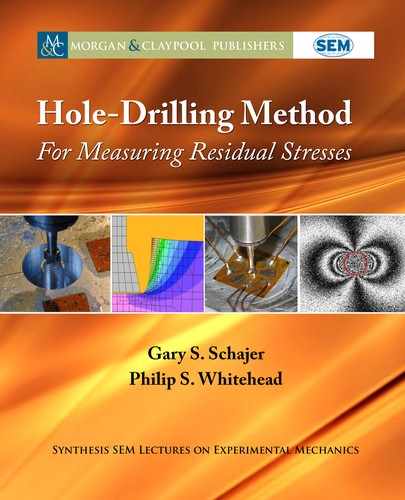
16 1. NATURE AND SOURCE OF RESIDUAL STRESSES
Disturbance of the unusually large growth stresses caused the wood to split apart as shown. e
outward bending of the fragments confirms that the original surface residual stresses were tensile.
Figure 1.13: Growth stresses in a eucalyptus tree caused the trunk to split open after felling
(photo courtesy of Wood Machining Institute).
Less dramatic, but also with very damaging and practically important effects, are the di-
mensional distortions that can occur in materials containing residual stresses during subsequent
machining. Removal of stressed material locally redistributes the stresses in the remaining mate-
rial so as to maintain internal force equilibrium. is stress change creates a corresponding strain
change, which in turn causes an overall geometry change. Even small geometry changes can be
very damaging when seeking to produce high precision components. In extreme cases—such as
in Figure 1.14—where substantial and widespread residual stresses were present in the original
billet and where a large percentage of material is removed, the geometric distortion can become
very plainly visible.
1.6 RESIDUAL STRESS MEASUREMENTS
e dimension changes that occur when stressed material is removed from a test object provides
a very effective means of measuring residual stresses. In general, the response to the removal
of stressed material is linear elastic and so there is a unique relationship between the measured
deformations and the residual stresses that originally existed in the removed material. It is then
possible to evaluate those residual stresses by analysis of the observed deformations, measured
either as strains or displacements. is is the basis of the so-called “destructive” measurement
methods, also called “relaxation” methods because the material removal causes the stresses in the
..................Content has been hidden....................
You can't read the all page of ebook, please click here login for view all page.
